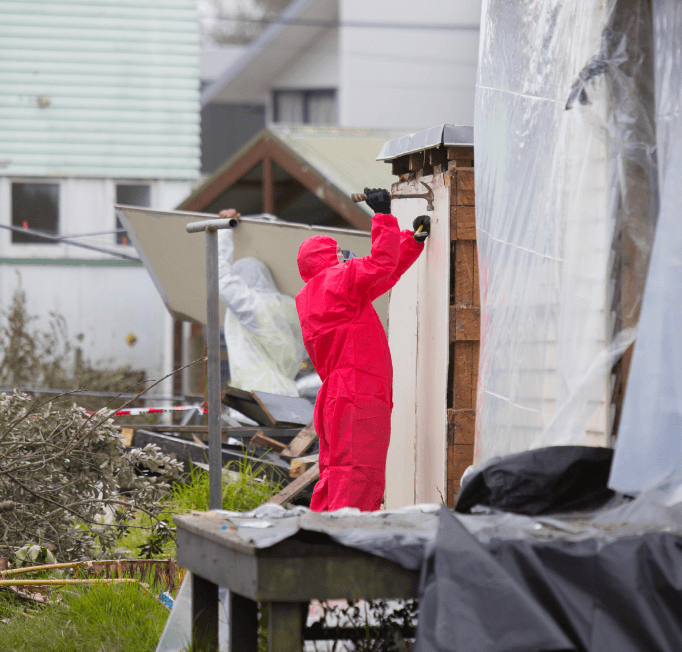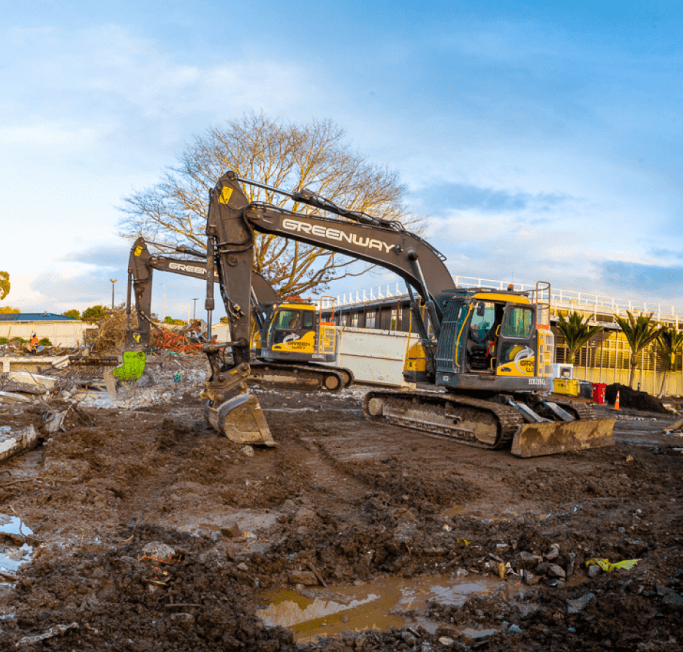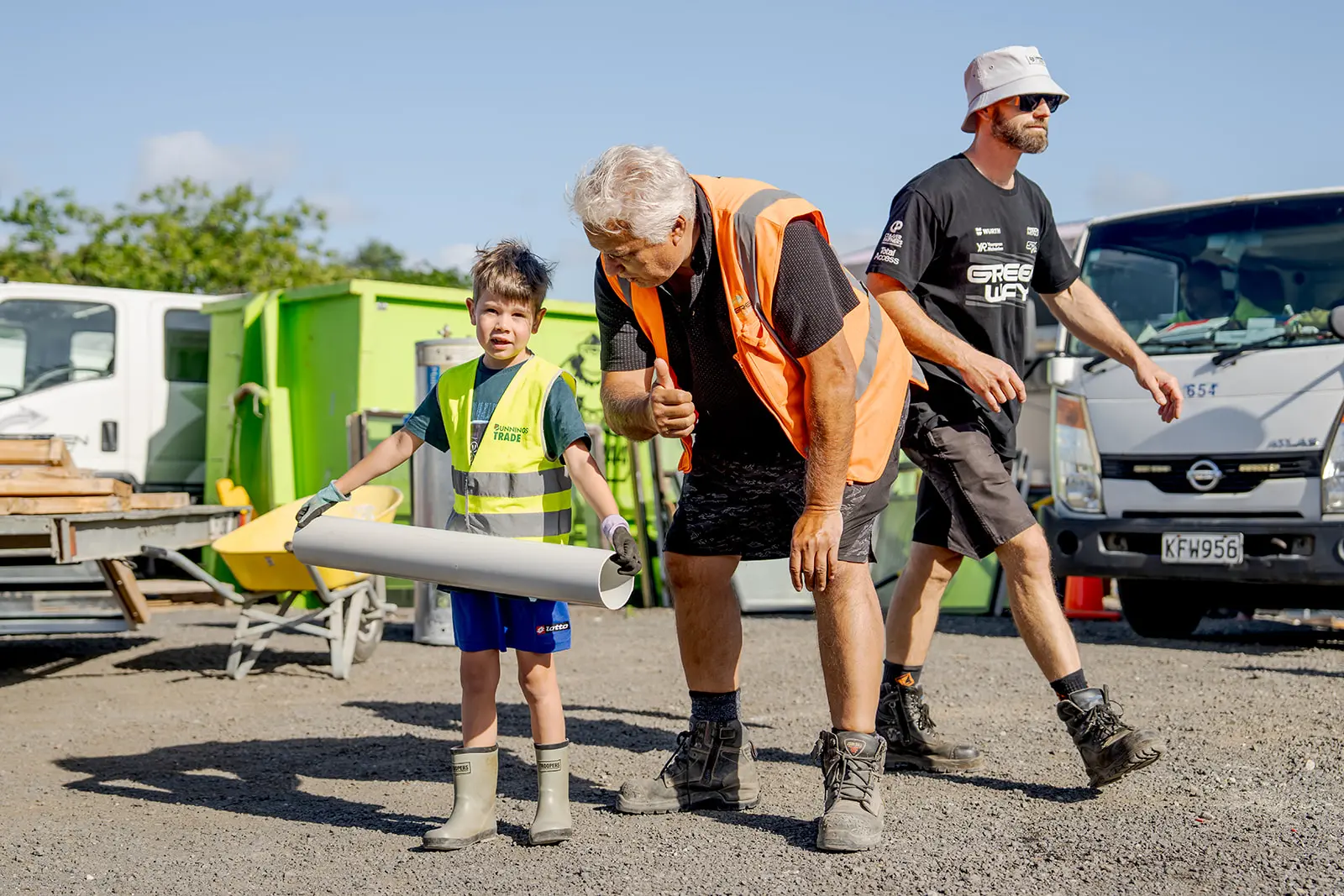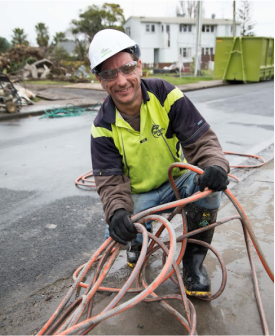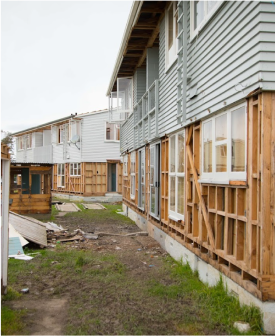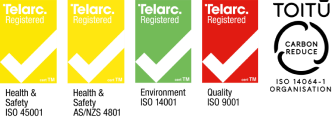We recently completed an asbestos soil remediation project at Kāinga Ora in Māngere, Auckland, and we thought we would share a few key points we have learned through our experience on the importance of doing it right when working with asbestos-contaminated soil.
No Room for Shortcuts in Asbestos Management
When it comes to managing asbestos in soil, there is no room for shortcuts. Asbestos contamination poses significant health risks, making it vital to approach any suspected contamination with care and precision. Ensuring proper assessment, adhering to stringent regulations, and implementing best practices are crucial steps to safeguarding workers, the public, and the environment.
Thorough Testing and Surveying: The First Step to Safety
The foundation of any asbestos management plan begins with thorough testing and surveying. If there is any suspicion of asbestos contamination in the soil, assessing the site is the essential first step. Skipping this critical phase can lead to dangerous exposure and legal liability down the line. Proper surveying helps identify contaminated areas, while testing confirms the presence and concentration of asbestos fibres. Accurate and comprehensive site assessment is non-negotiable when it comes to asbestos.
Adherence to Regulations and Best Practices
Regulatory compliance is key to safely managing asbestos in soil. Strict protocols must be followed, including the correct use of Personal Protective Equipment (PPE) and decontamination facilities, elements that are sometimes overlooked in soil remediation projects. Ensuring that all workers are equipped with the right PPE, and that decontamination stations are fully operational, prevents the spread of asbestos fibres beyond the site, protecting workers and the surrounding environment.
Transporting Contaminated Soil: No Compromises
When transporting asbestos-contaminated soil offsite, it is critical that trucks are properly lined. This is not just a best practice, it is a regulatory requirement to prevent asbestos fibres from escaping during transport. Any suggestion to skip this step is a cost-saving measure that compromises safety. Cutting corners in this area puts workers, communities, and the environment at unnecessary risk. Proper lining is essential and non-negotiable.
Height Safety: Protecting Workers at Every Level
Asbestos soil management often involves working at heights, such as accessing trucks or handling loads from above. Ensuring proper fall protection measures, such as harnesses and secure access points, is crucial to protecting workers. The combination of hazardous materials and elevated workspaces increases the risks, making it vital that all safety equipment and protocols are strictly followed.
Engaging Qualified Consultants for Clearance
Hiring experienced and qualified asbestos consultants is critical to ensuring safe and effective clearance. Managing asbestos contamination requires expertise, and only capable consultants should be trusted to carry out assessments and final clearances. Their role is pivotal in ensuring that the site is fully cleared and compliant with all regulations, providing peace of mind that the job has been done correctly.
Thorough Decontamination: Equipment Must Be Cleared Before Leaving the Site
All equipment used on an asbestos-contaminated site must undergo rigorous cleaning and be cleared by a third party before leaving the premises. This step ensures that asbestos fibres do not leave the site, preventing cross-contamination and reducing long-term environmental impacts. Failing to properly decontaminate equipment can have serious consequences for public safety and project operations.

